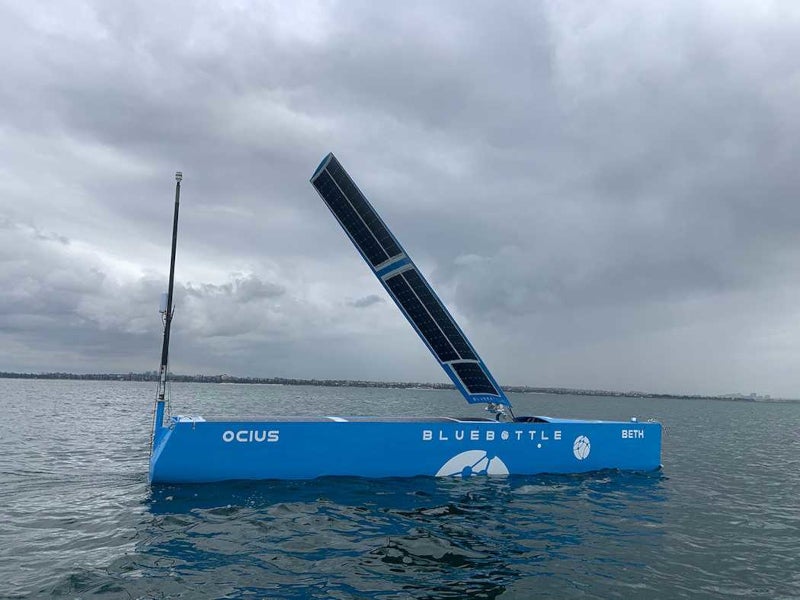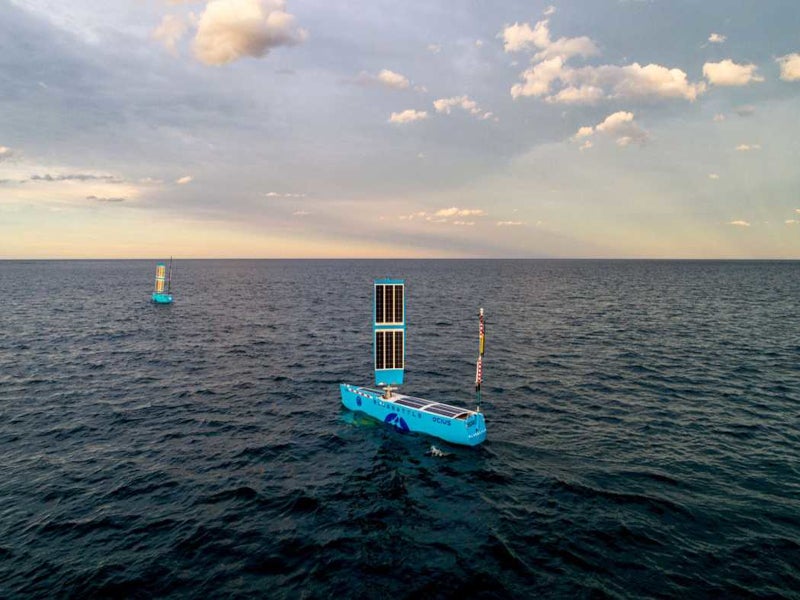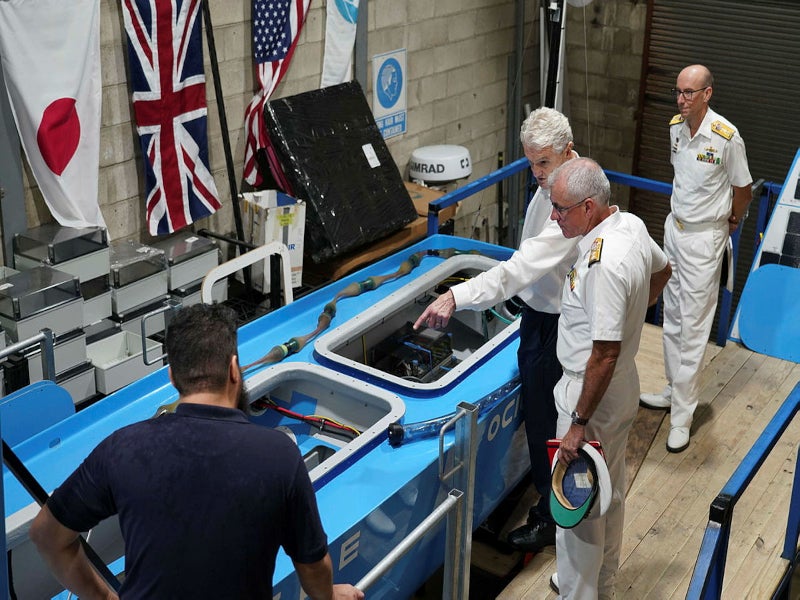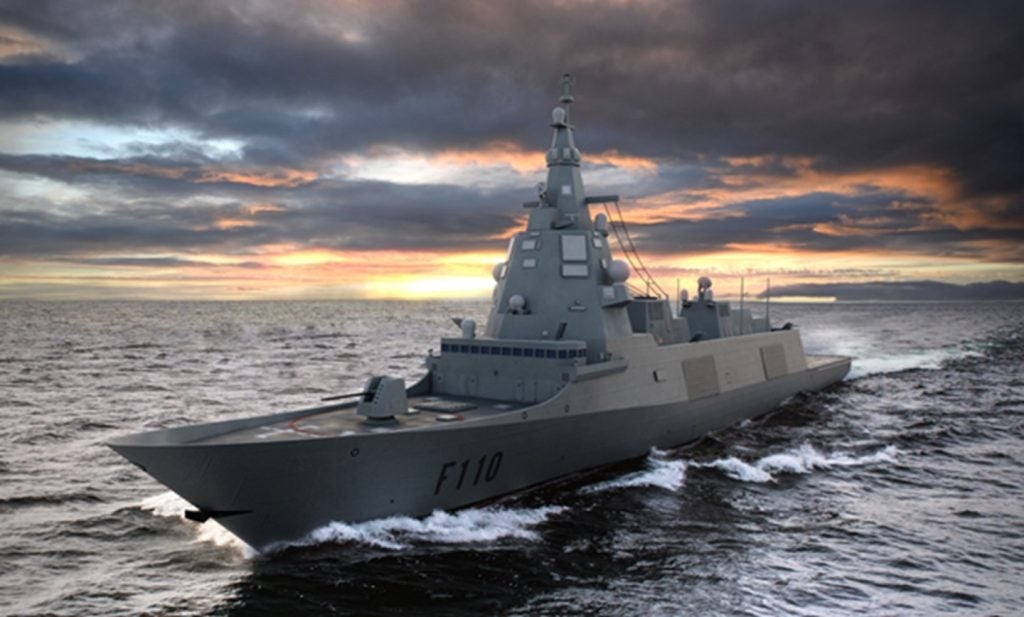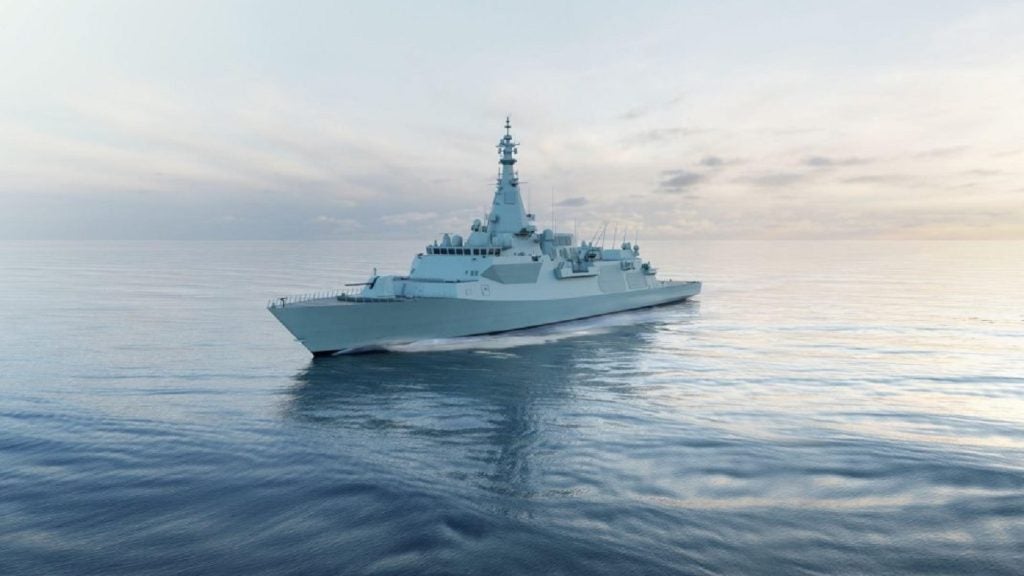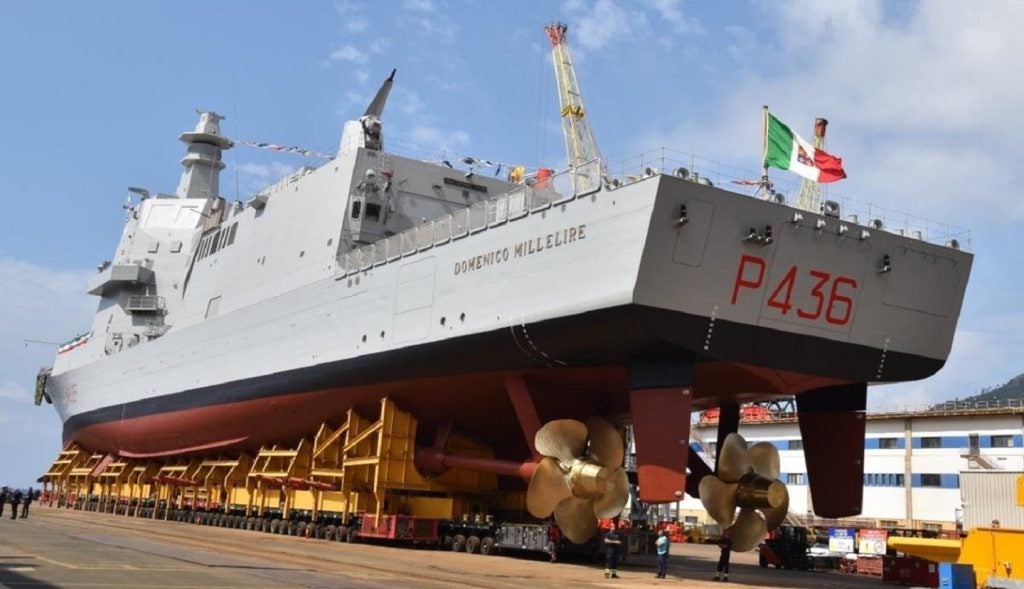The Bluebottle remotely piloted unmanned surface vessels (USVs) are manufactured by Australia-based marine technology provider Ocius Technology (Ocius) for persistent maritime surveillance.
Ocius received the 2015 Capability and Technology Demonstrator (CTD) programme contract worth A$3m ($2.85m) from the Commonwealth’s Defence Science and Technology Group (DSTG) Strategy Policy and Intelligence group to develop a USV with autonomous anti-submarine warfare (ASW) capability for the Navy in September 2015.
Ocius partnered with Thales Australia, an aerospace and defence electronics company, to collaborate on the CTD programme. The company also collaborated with the universities of Wollongong, New South Wales (NSW) and Sydney to develop the world’s first high-performance proof-of-concept ASW-USV demonstrator.
Bluebottle-class USV development details
Ocius initially built the 5.8m-long USV named Stinger, a longer version of its 2.8m-long oceanographic Nemo USV.
The ultimate objective of the development was to showcase an affordable, persistent, long-range detection capability to bolster the ability of the Navy’s surface forces to identify and monitor submarines and torpedoes from practical distances.
Ocius and Thales Australia accomplished a successful demonstration of Bruce, a prototype Bluebottle USV, which was powered by solar, wind and wave energy in August 2017. The demonstration took place off the coast of NSW. The prototype was demonstrated with Thales’ thin line array on a 60m cable.
Ocius received a contract worth A$1.7m ($1.24m) from the Defence Innovation Hub in November 2018 to assess the feasibility of a command and control network of USVs that are intelligent and persistent.
The technology will enhance a range of maritime defence missions such as mine clearance, patrolling, environmental monitoring and search and rescue operations.
The company named the second vessel in the Bruce-class of Bluebottle USVs Bob. The vessel underwent initial sea trials in March 2019.
Bob and Bruce were accompanied by three simulated Bluebottle USVs off the NSW coast to showcase the capabilities of a five-member Bluebottle team in patrolling and safeguarding an asset in the ocean in team behaviours and intelligent networking trials in June 2019.
In June 2020, the Australian Government awarded an A$5.5m ($3.77m) contract to Ocius through the Defence Innovation Hub to continue the development of autonomous USVs. The work on the project was completed in August 2022.
Next-generation Bluebottle USVs development details
Ocius added longer and larger USVs to the Bluebottle family of USVs. The first of the five next-generation USVs was christened Beth at the company’s research and development (R&D) facility at the University of New South Wales (UNSW) in August 2020. The second USV was named Bonnie in December 2020.
The last three Bluebottle USVs were christened Beacon, Bluey and Brizo at the Ocius facility on the UNSW Randwick Campus in June 2021.
The Royal Australian Navy (RAN) signed a contract worth A$4.9m ($3.28m) with Ocius to acquire five Bluebottle USVs to advance its capability to effectively employ robotic and autonomous systems in November 2022.
The first two vessels were delivered in March 2023, while the fifth and final USV was welcomed in June 2023.
Bluebottle USV design and features
The Bluebottle range of USVs are innovative, self-sustaining unmanned ocean drones designed to provide autonomous surveillance and communications.
They are suitable for long-distance patrols as they can stay at sea for extended lengths of time and move forward in all conditions without any need for refuelling or recharging.
The unmanned vessels can be launched from a conventional boat ramp or crane.
Technical specifications of Bruce-class Bluebottle USVs
The Bruce-class Bluebottles measure 5.6m (19ft) long and 1.1m wide and have a draught of 1.4m and a full load displacement of 650kg. The vessels have a top speed of 5.6kt and can sail at speeds ranging between 2kt and 3kt on solar energy.
The USV can sail at a speed of 1kt in 5kt of wind, 3kt in 15kt and 4.5kt in 25kt. The wave-powered speed of the vessel is between 0.5kt and 1.5kt. The vessel can operate in sea state five conditions and up to sea state seven conditions.
It can carry 150kg in a dry payload bay and 150kg wet in a keel cassette module or winch. The keel winch cassette has a diameter of 1.3m and a winch torque of 60Nm.
The ship can be configured with a battery with output ranging between 14kWh and 21kWh. It generates solar power of up to 500W.
Technical specifications of Beth-class unmanned surface vessels
Each Beth-class Bluebottle vessel is 6.8m (22ft) long and 1.3m wide and has a draught of 1.6m. It has a full load displacement of 800kg. The vessel can achieve a top speed of 6.5kt and can sail at speeds of 2kt to 4kt in solar energy-powered operation.
The vessels can sail at a speed of 1.4kt in 5kt of wind, 3.5kt in 15kt and 5.5kt in 25kt. The wave-powered speed of the vessel is between 0.5kt and 1.5kt.
The vessel can carry 350kg in a dry payload bay and 200kg wet in a keel cassette module or winch. The keel winch cassette has a diameter of 1.78m and a winch torque of 120Nm.
The unmanned ship can be equipped with a battery of 14kWh to 27kWh. The solar cells on the sail and deck produce up to 1,500W power.
Sensors and communications
An integrated and networked communication system supports live tracking of the vessels. The ships can be monitored while in autonomous operation or controlled remotely. They exchange data continuously with the control room.
Multiple sensors can be fitted inside the hull and on the aft communications mast.
Bluebottle’s keel winch cassette
The keel winch of the USV is a patented device designed to displace water ballast in the keel. The addition or replacement of a cassette does not affect the Bluebottle’s displacement or trim.
The cassette can be conveniently packed flat and shipped worldwide, allowing customers to install, commission and test their sensors or arrays on the winch. Once tested, the cassette can be inserted into the payload bay of a Bluebottle.
Blue Sentry autonomous system
Thales received an A$3.8m ($2.43m) contract from the Australian Government to develop a Blue Sentry autonomous system, comprising an autonomous team of USVs equipped for ASW and surveillance missions, in October 2020.
Under the contract, Ocius’ autonomous platform Bluebottle was integrated with the Thales Remote Active Sonar Systems (RASS) array, comprising towed active and passive sonar sub-systems.
Thales Australia’s new thin line Fibre Optic Towed Array capability allows the USVs to autonomously patrol large areas of the Australian coastline, performing underwater intelligence, surveillance and reconnaissance (ISR).
The USV was also fitted with an autonomous data processing, recording and reporting system. The contract helped in the development of a mission-capable product demonstrator.
Propulsion
The USVs are propelled by three propulsion units using solar, wind and wave energy.
The Bluebottle utilises its patented solar sail to harness both solar and wind energy, enabling it to navigate by sailing with wind power or utilising solar power to drive its motor.
In the absence of sunlight and wind, the Bluebottle relies on its unique flipper and rudder appendage submerged underwater to steer and propel itself against the waves. Bluebottles consequently maintain a constant speed of advance regardless of the prevailing conditions.
Contractors and partners involved
Ocius collaborated with Australia-based marine services provider Norship Marine to develop a sustainment and support model for the Bluebottle USVs in December 2020.
Ocius partnered with L3Harris Integrated Mission Systems Australia to develop the Bluebottle USVs as communications gateways.
Australia-based boat maker Van Munster Boats built the five USVs delivered to the RAN.
One2three Naval Architects, a naval engineering consultant designed the hull, keel, deck and hatches for the Bruce prototype.
Other key Australian contractors and partners involved in the project are intellectual property firm Clarke IP, Spitfire Association, Ulladulla Engineering, a general engineering company and boat builder Steber International.

